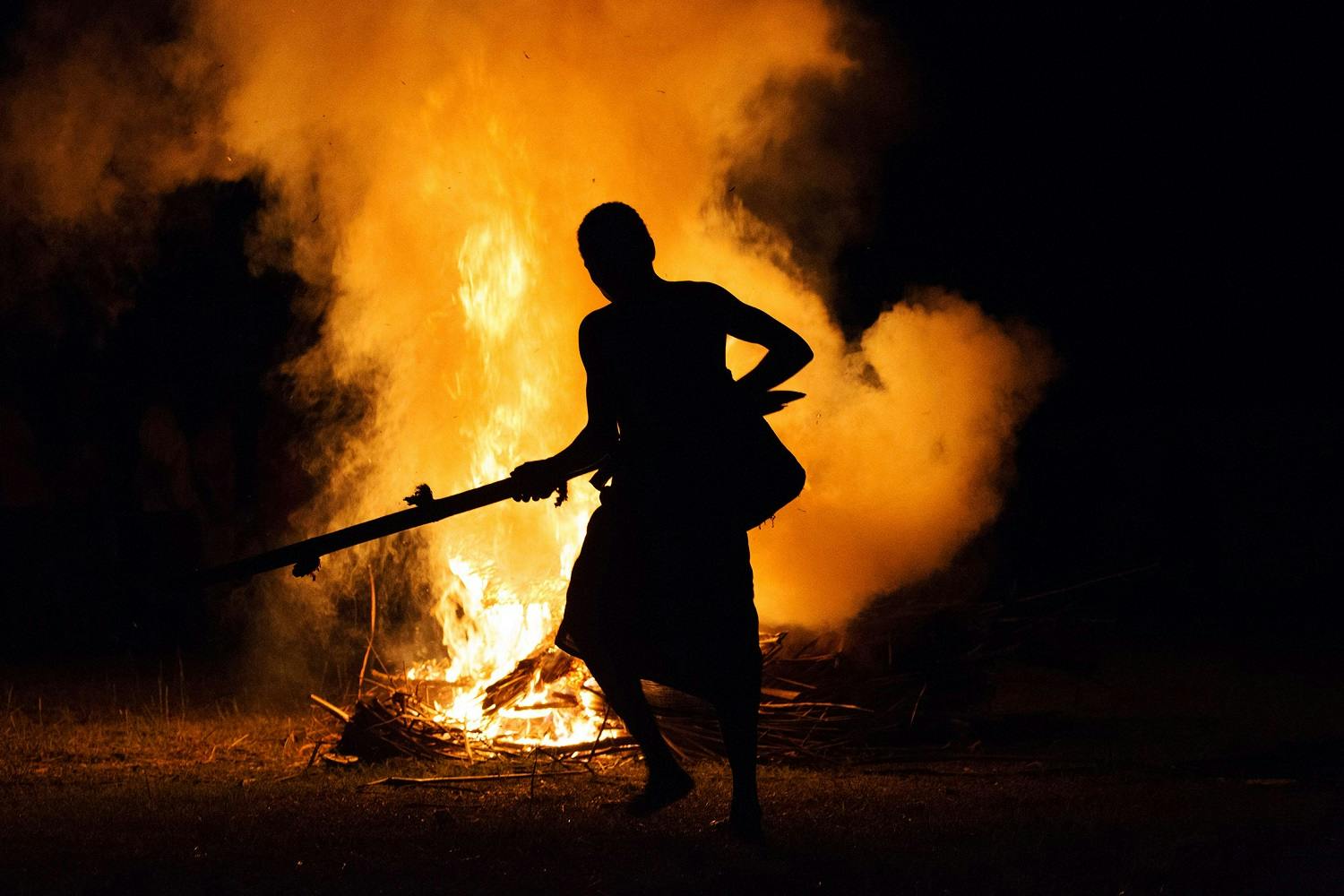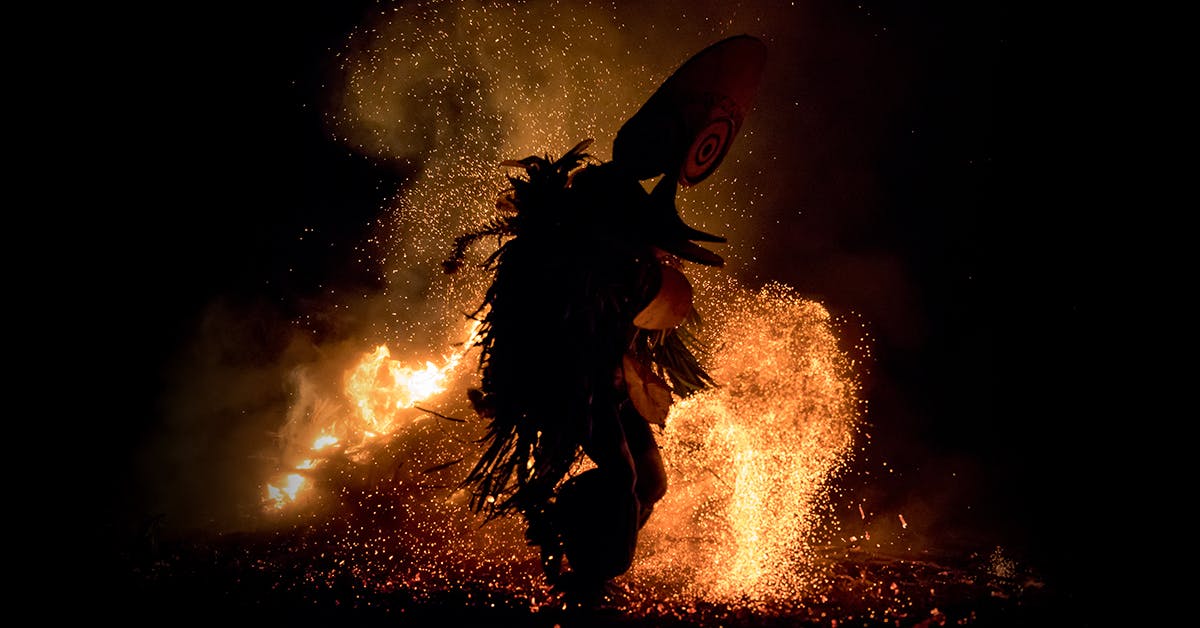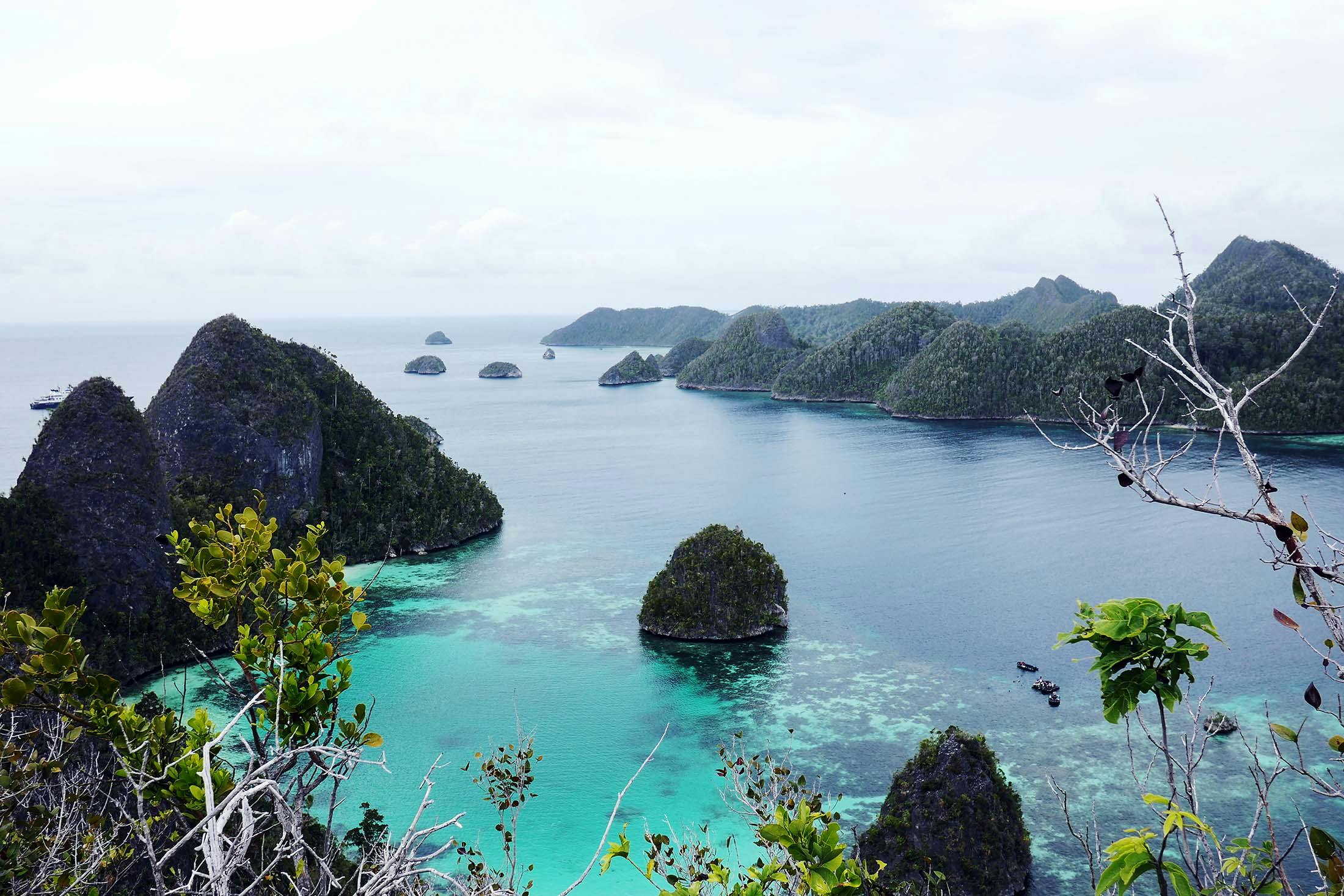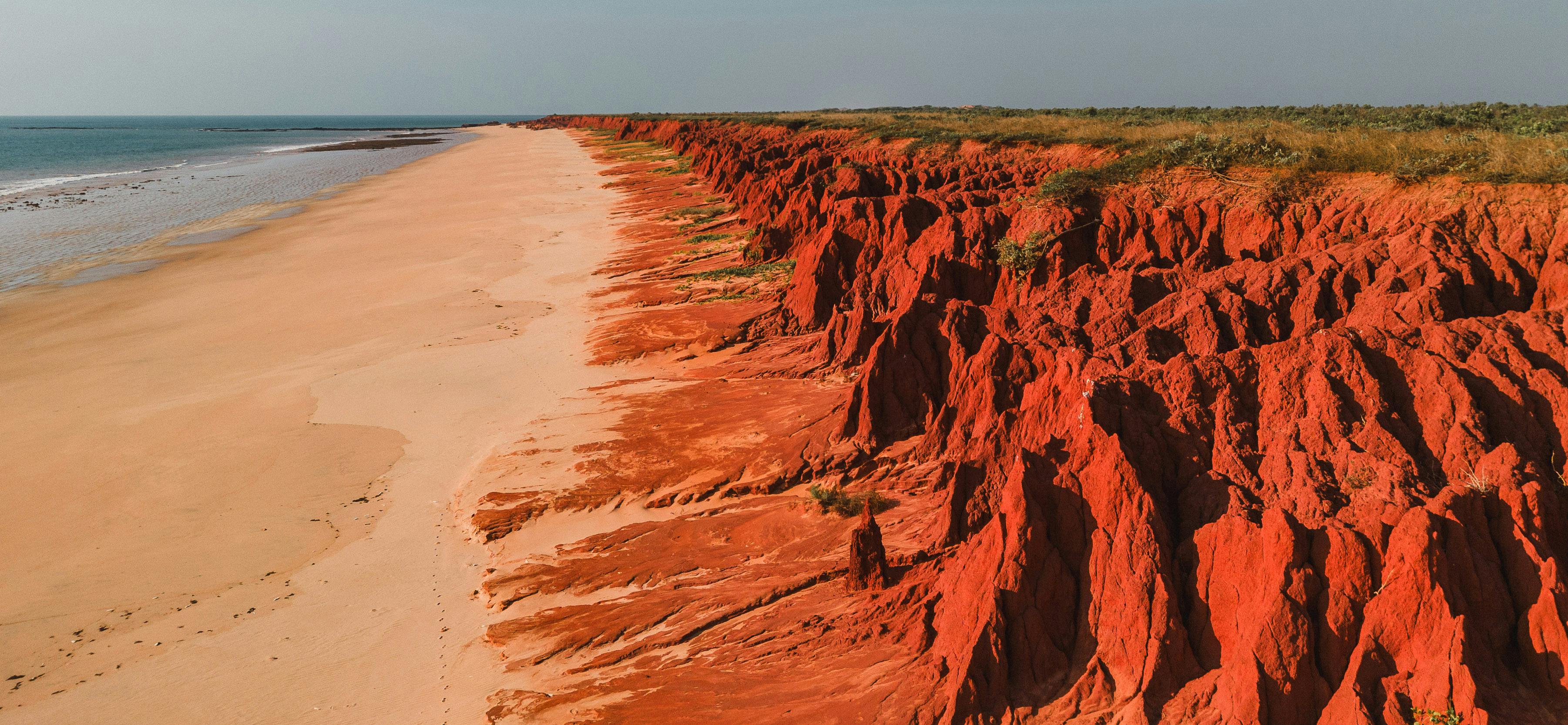Face-To-Face With the Baining Fire Dancers of Papua New Guinea
As the last ray of the blood-orange sunset seeps beneath the horizon, we arrive by road in the small village of Galim in the Baining Mountains, while on a Papua New Guinea cruise. There is a distinct smell of burning wood in the fresh air and a buzz of activity. Above me, a carpet of twinkling stars lights up the velvety black sky.
In the middle of a grass field, there’s a bonfire emanating from a large pile of wood. The flames crackle and pop as they expand over the logs and branches strewn across the heap. An old man prods and pokes at the wood with an extraordinarily long stick, causing a few fading flames to reignite sleepily.
Suddenly a slow, rhythmic drumbeat begins and a chorus chants. The sound is deep, raw and tribal as a figure emerges out of the darkness with his naked legs, arms and torso barely visible.
His profile begins to take form as he walks confidently towards the bonfire. The man wears a few Raffia palm leaves and his skin appears to be painted white. Hiding his face is an elaborate and eerie-looking mask with big spiraling eyes and large protruding lips. He jogs towards the fire, his toned calf muscles flexing. He finally reaches it and then leaps into the air. His feet miss the flames by inches.
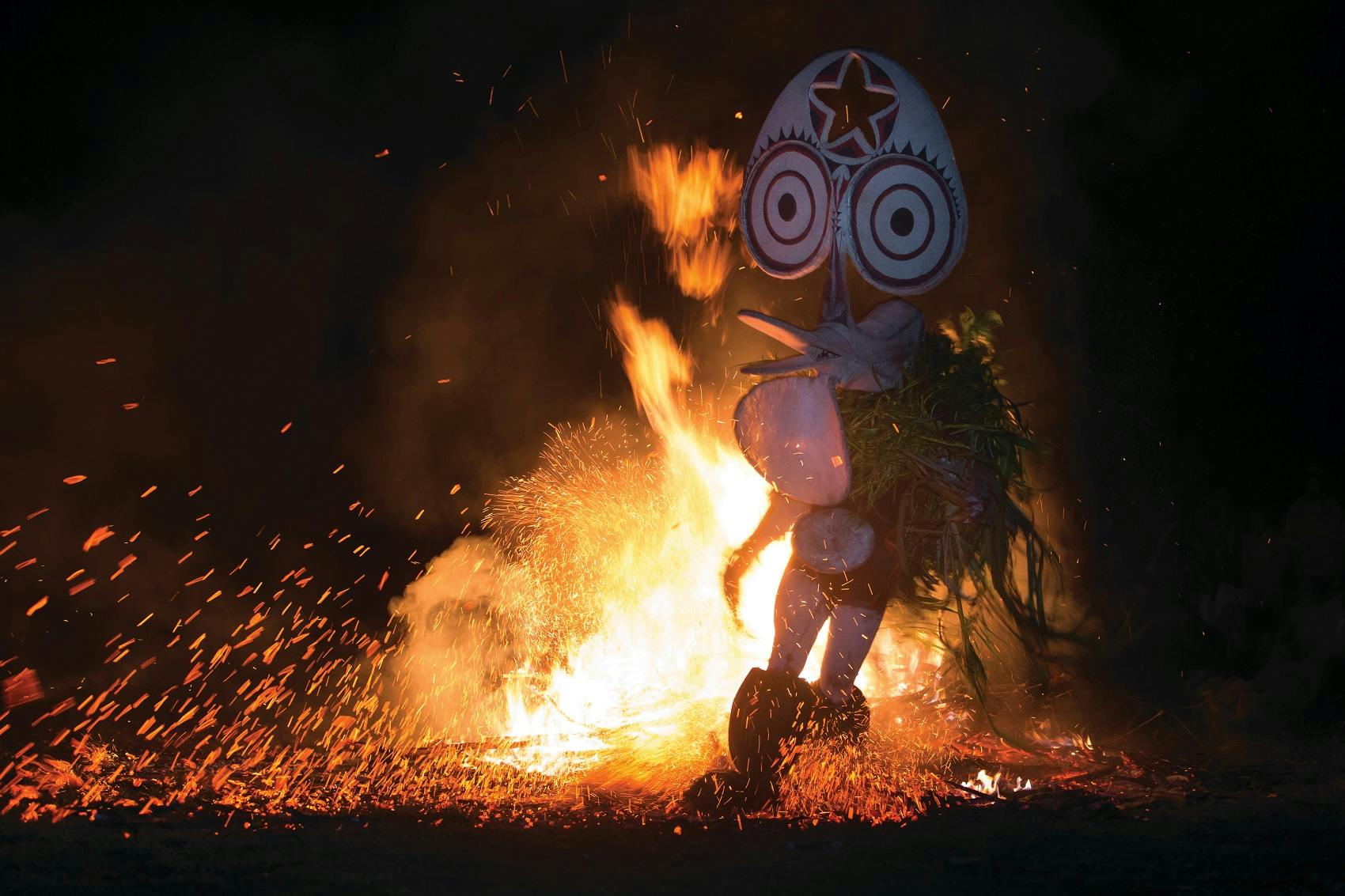
The Festival in Papua New Guinea’s Mountains
Little is known about the Baining community of Papua New Guinea, including the reason behind their distinct tribal gatherings. I naturally think of this particular occasion as a ceremony, as it certainly feels like one, with the congregated crowd and the community of men dressed for the event.
According to Alexandra Edwards, an anthropologist and a member of Silversea’s Expedition Team, this is a misinterpretation. “The Baining people are small-scale farmers, who subsist on their gardens and a few animals,” she tells me. They have no institutions, priests or chiefs. “Instead this is a festival to initiate young men into adulthood, by showcasing the activity males carry out in the bush,” she explains. “The fire itself is thought to purge negative components—it’s not unusual to see a tribesman jump through the fire with a sick child in his arms.”
This explains the uninhabited, wild surroundings of the bonfire. More masked characters join the parade and swirl and spin around the fire while those taking the leap get increasingly unruly. The Baining masks, known as kavat masks, are made from cane and are covered in white barkcloth. The features are drawn using natural dyes from tree sap and berries, and their abstract nature represents the spirits of the forest.
As the old man stoking the fire gets more animated, so too do the dancers. Their leaps become frivolous and daring, allowing their feet to actually glide through the flames.
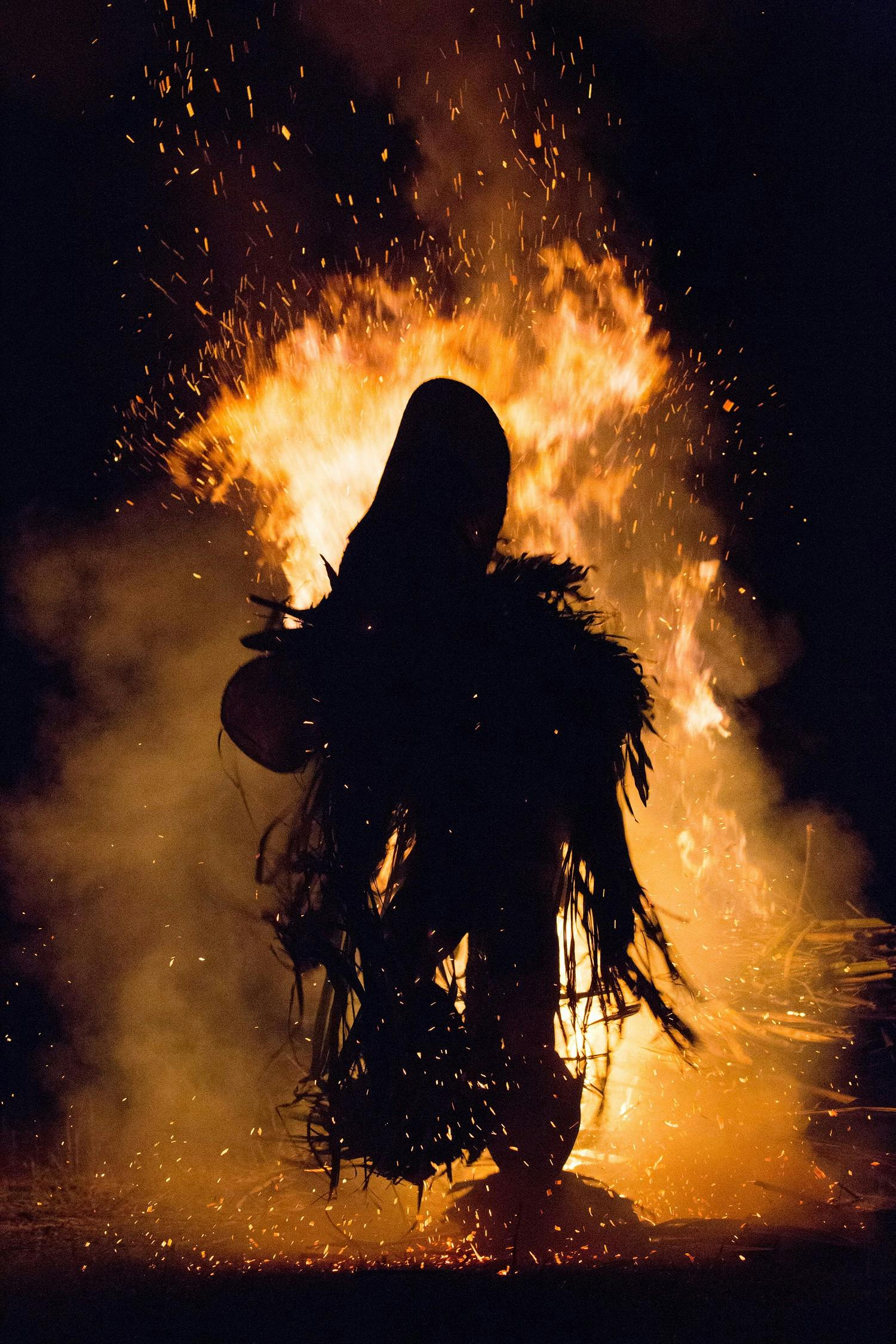
Secrets of the Baining People
“The Baining people are a naturally secretive tribe,” says Edwards. Scientists have been trying to work with them for 70 years, but nobody was able to gain an insight into their way of life until the 1990s.
We do know that, unlike most Papuans, they have a deep aversion to the surrounding forest. “They see it as chaotic and dangerous, as a wild realm that must be tamed through work. And work is what separates humans from the natural, animalistic world. It is what removes us from being savages,” Edwards explains. “So playing and interaction is frowned upon, and for the Baining people, work and discipline is the epitome of the human ideal.”
As the fire dancing reaches its climax, figures appear to the left and right of the bonfire. Scores of bodies leap through the air, their arms outstretched and legs flailing wildly while kicking the flames with ferocity.
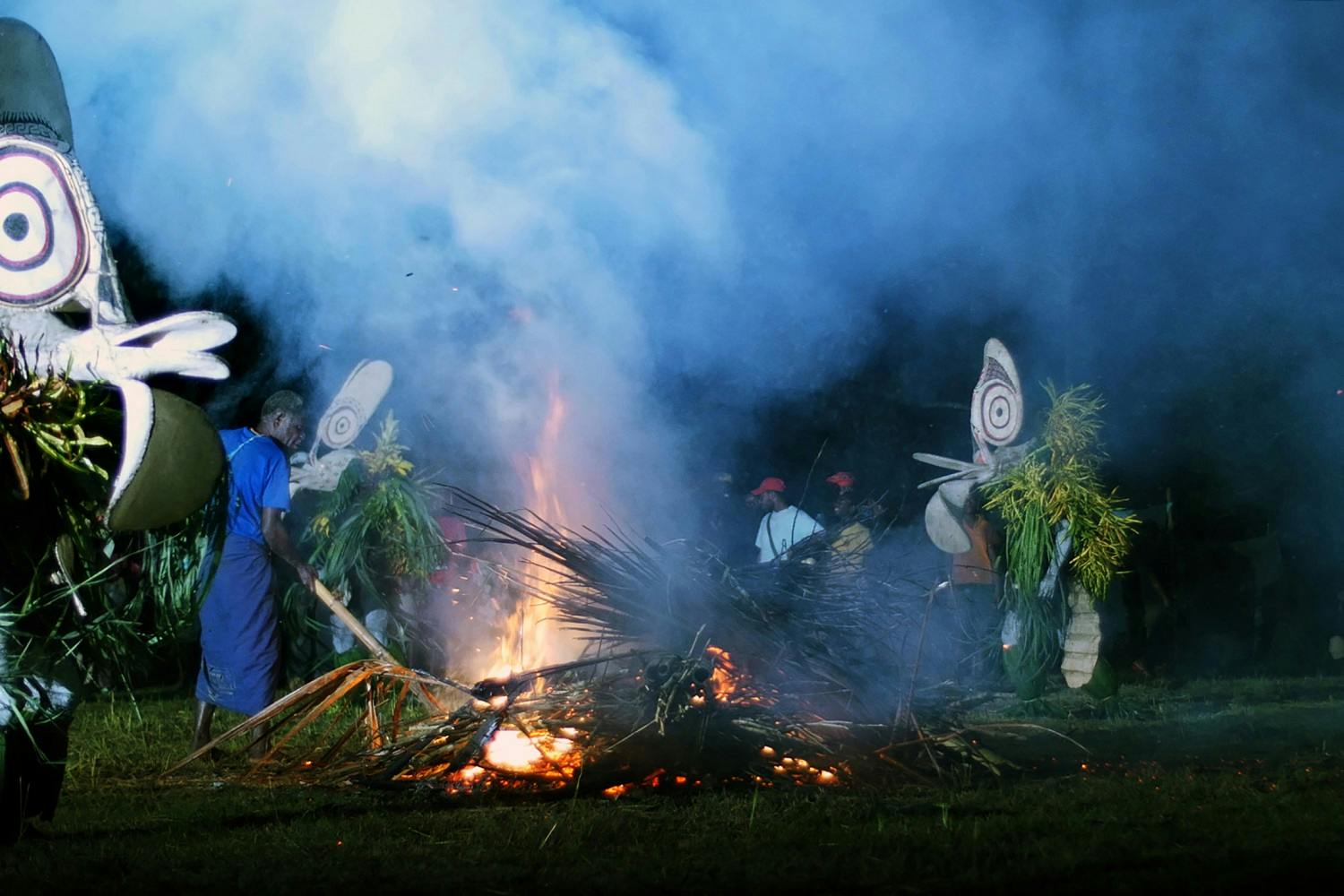
“They are permitting themselves some enjoyment,” explains Edwards, honing in on just how unique this occasion is to the Baining people, too. For Edwards, this performance is incredibly special, as it’s the greatest and most iconic expression of the Baining people. “There are approximately 150 locals here, and no one is trying to sell anything,” she says. “There are no food stalls or souvenirs. Yet here we are, in the heart of the mountains and the place is teeming with contagious excitement.”
I leave the Baining Fire Dance with my mind whirring, unable to escape the chanting and drumbeat that continues to play in the distance. Edwards tells me the initiation could go on until dawn, so the dance certainly isn’t over yet. Visions of the leaps over the fire repeat in my mind, and my heart races with the exhilaration of what I’ve witnessed. But it’s the memory of contorted masks flying over spitting embers that will remain with me forever.
On a roll? Discover what you can explore on the South Pacific islands.
